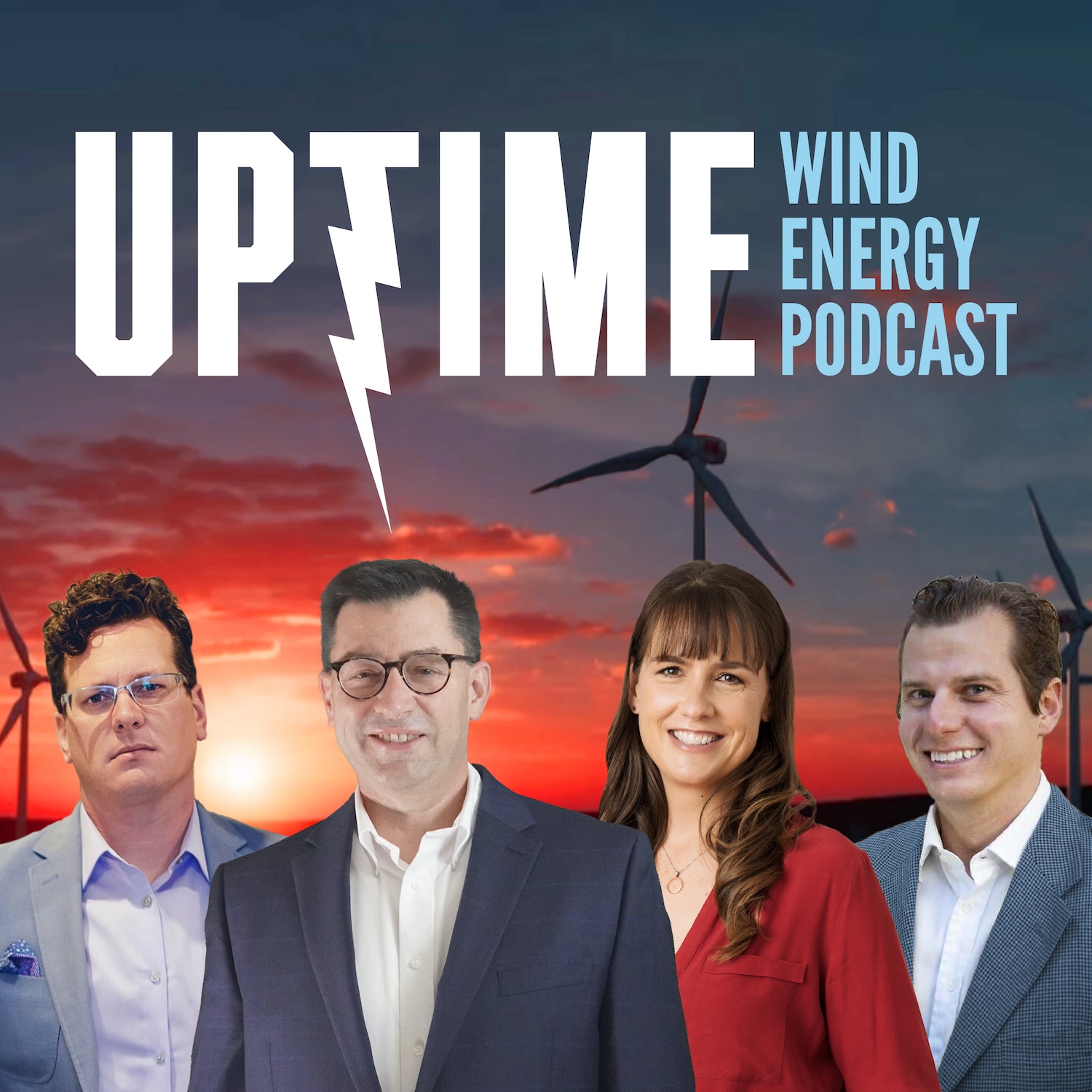Power-Up: Siemens Gamesa LEP, Vestas Vibration Monitoring
Description
This week on Uptime Power-Up, we discuss Siemens Gamesa's unique leading edge protection solution which uses a shock absorbing cavity for added cushion. Then Vestas' Utopus Insights patent that uses vibration monitoring to determine turbine health. And finally, a diaper for your bird, which Joel may be in the market for.
Sign up now for Uptime Tech News, our weekly email update on all things wind technology. This episode is sponsored by Weather Guard Lightning Tech. Learn more about Weather Guard's StrikeTape Wind Turbine LPS retrofit. Follow the show on Facebook, YouTube, Twitter, Linkedin and visit Weather Guard on the web. And subscribe to Rosemary Barnes' YouTube channel here. Have a question we can answer on the show? Email us!
Pardalote Consulting - https://www.pardaloteconsulting.comWeather Guard Lightning Tech - www.weatherguardwind.comIntelstor - https://www.intelstor.com
Allen Hall: Welcome to Power Up, the Uptime podcast focused on the new, hot off the press technology that can change the world. Follow along with me, Allen Hall, and IntelStor's Phil Totaro, as we discuss the weird, the wild, and the game changing ideas that will charge your energy future. Phil, our first idea is a Siemens Gamesa, and this leading edge protection is a little bit different than things we have normally seen.
It includes basically a cavity. So it's like a shell sort of device that would go on the leading edge, but it has a cavity with a shock absorbing medium. Inside of it. So it take the blows of the raindrops or the bugs or the hail. So it absorbs that energy. And then the, the wind turbine lives a long time.
That's a interesting concept. I haven't seen
Philip Totaro: it implemented yet though. I think because this patent application is also recent is probably something they're still testing. They've got a blade tip with a double layer with an elastomeric. Or, I mean, I guess they've described it in the patent as it could be anything kind of squishy, let's call it polymeric material, any kind of, squishy type material.
But what their, what their theory is behind this is that Because the leading edge, the, particularly around the tip, your tip speed is so high on a wind turbine blade that when you impact a raindrop or you impact a bug, obviously it makes little dents and you hit enough, especially if you've got like a swarm of bugs or flies or something, it can actually act like you're, you're sandblasting the leading edge of the blade.
And, everybody in the industry has probably seen, leading edge erosion and knows what it is. But the idea behind this is to say, all right, behind, the, the blade leading edge and the gel coat, there's this cavity with this, elastomeric damper kind of in there that would theoretically absorb some of that impact and also provide a, um, so it, it provides a rebound on the tip to, to allow it to maintain the aerodynamic profile.
More Episodes
Allen Hall and Joel Saxum talk with Cory Mittleider from Malloy Wind about the complex world of wind turbine main bearings. Cory breaks down why traditional bearing coatings are failing in newer turbine models and explores how electrical discharge, material choices, and monitoring systems play...
Published 11/21/24
Published 11/21/24
This week on Uptime Power-Up we discuss Vestas' offshore blade repair method, Siemens Gamesa's way of optimizing power production for floating turbines, and a fun way for kid's to collect their Halloween candy.
ign up now for Uptime Tech News, our weekly email update on all things wind...
Published 11/20/24


